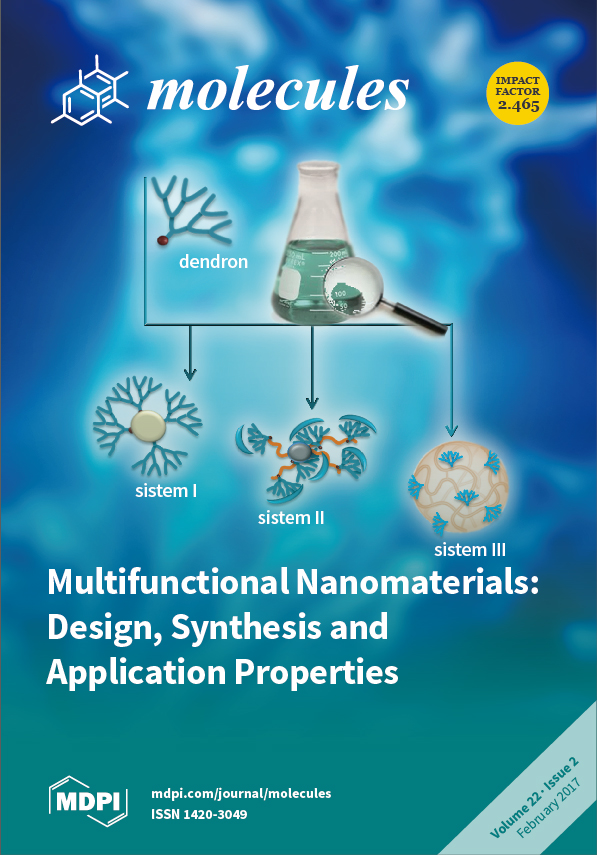Four novel ruthenium organometallic complexes: [(η
6-
p-cymene)Ru(4,4,4-trifluoro-1-(4-bromophenyl)-1,3-butanedione)Cl] (
1), [(η
6-
p-cymene)Ru(4,4,4-trifluoro-1-(4-bromophenyl)-1,3-butanedione)pta]PF
6 (
2), [(η
6-
p-cymene)Ru(4,4,4-trifluoro-1-(4-iodophenyl)-1,3-butanedione)Cl] (
3) and [(η
6-
p-cymene)Ru(4,4,4-trifluoro-1-(4-iodophenyl)-1,3-butanedione)pta]PF
6 (
4) were synthesized and
[...] Read more.
Four novel ruthenium organometallic complexes: [(η
6-
p-cymene)Ru(4,4,4-trifluoro-1-(4-bromophenyl)-1,3-butanedione)Cl] (
1), [(η
6-
p-cymene)Ru(4,4,4-trifluoro-1-(4-bromophenyl)-1,3-butanedione)pta]PF
6 (
2), [(η
6-
p-cymene)Ru(4,4,4-trifluoro-1-(4-iodophenyl)-1,3-butanedione)Cl] (
3) and [(η
6-
p-cymene)Ru(4,4,4-trifluoro-1-(4-iodophenyl)-1,3-butanedione)pta]PF
6 (
4) were synthesized and characterized by elemental analysis, infrared (IR), UV-Vis, NMR and mass spectroscopy and single-crystal X-ray diffraction. The crystal structures and spectroscopic data were compared to the previously published complexes [(η
6-
p-cymene)Ru(4,4,4-trifluoro-1-(4-chloro-phenyl)-1,3-butanedione)Cl] (
5) and [(η
6-
p-cymene)Ru(4,4,4-trifluoro-1-(4-chlorophenyl)-1,3-butanedione)pta]PF
6 (
6). The pairs of complexes
1 and
3 as well as
2 and
4 are isostructural, with the former crystallizing in triclinic P-1 and the latter in monoclinic P2
1/c. The ruthenium(II) ion is found in a pseudo-octahedral “piano-stool” geometry in all compounds. Bond lengths and angles are consistent with other complexes of this type. Complexes
2 and
4 exhibit some moderate dynamic disorder. The lack of hydrogen bonding and major π-π interactions means that most of intramolecular interactions are fairly weak and involve halogen atoms present. This was further confirmed by
1H-NMR spectra, where a significant difference is observed only on the ligand near the halogen atom, following an expected trend. The combined data show that the difference in any activity depends substantially on the type of the ligand′s substituted halogen atom.
Full article






